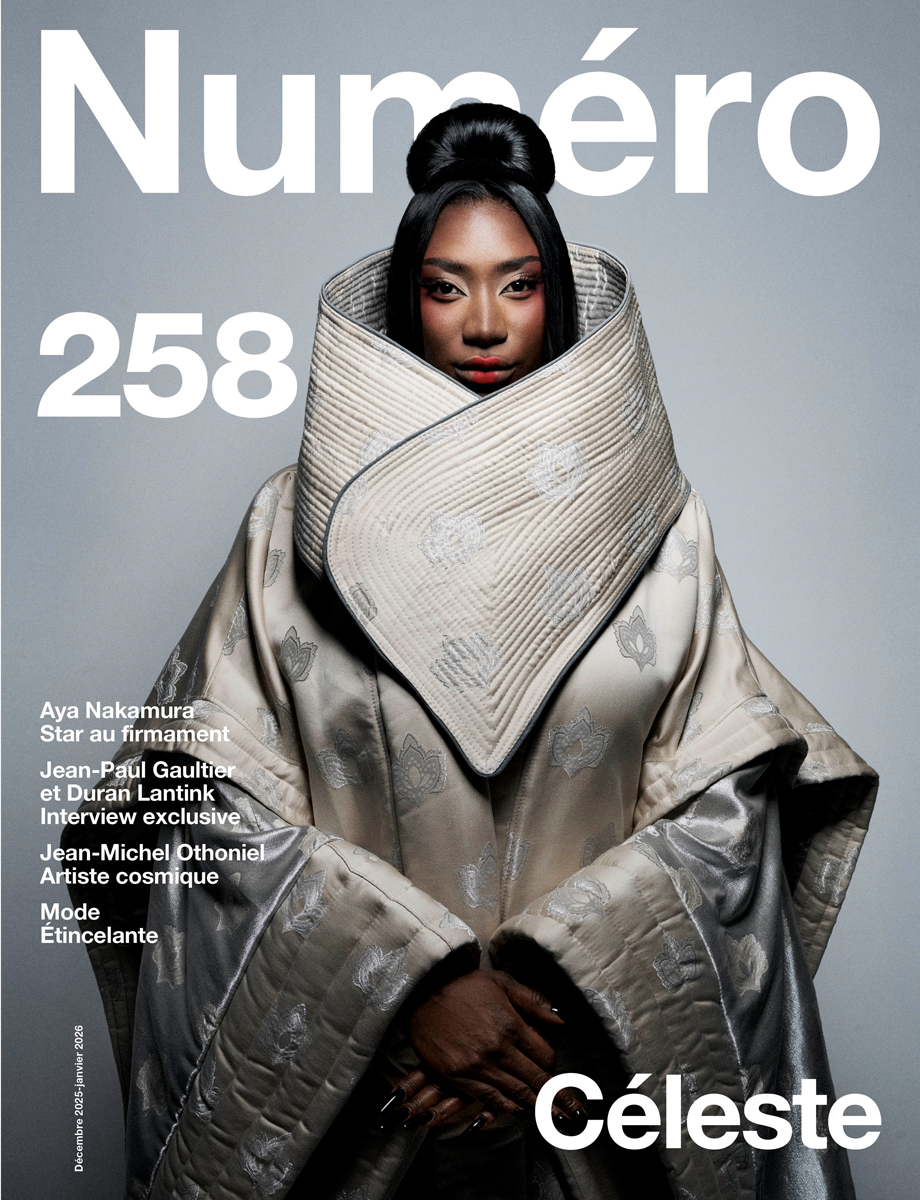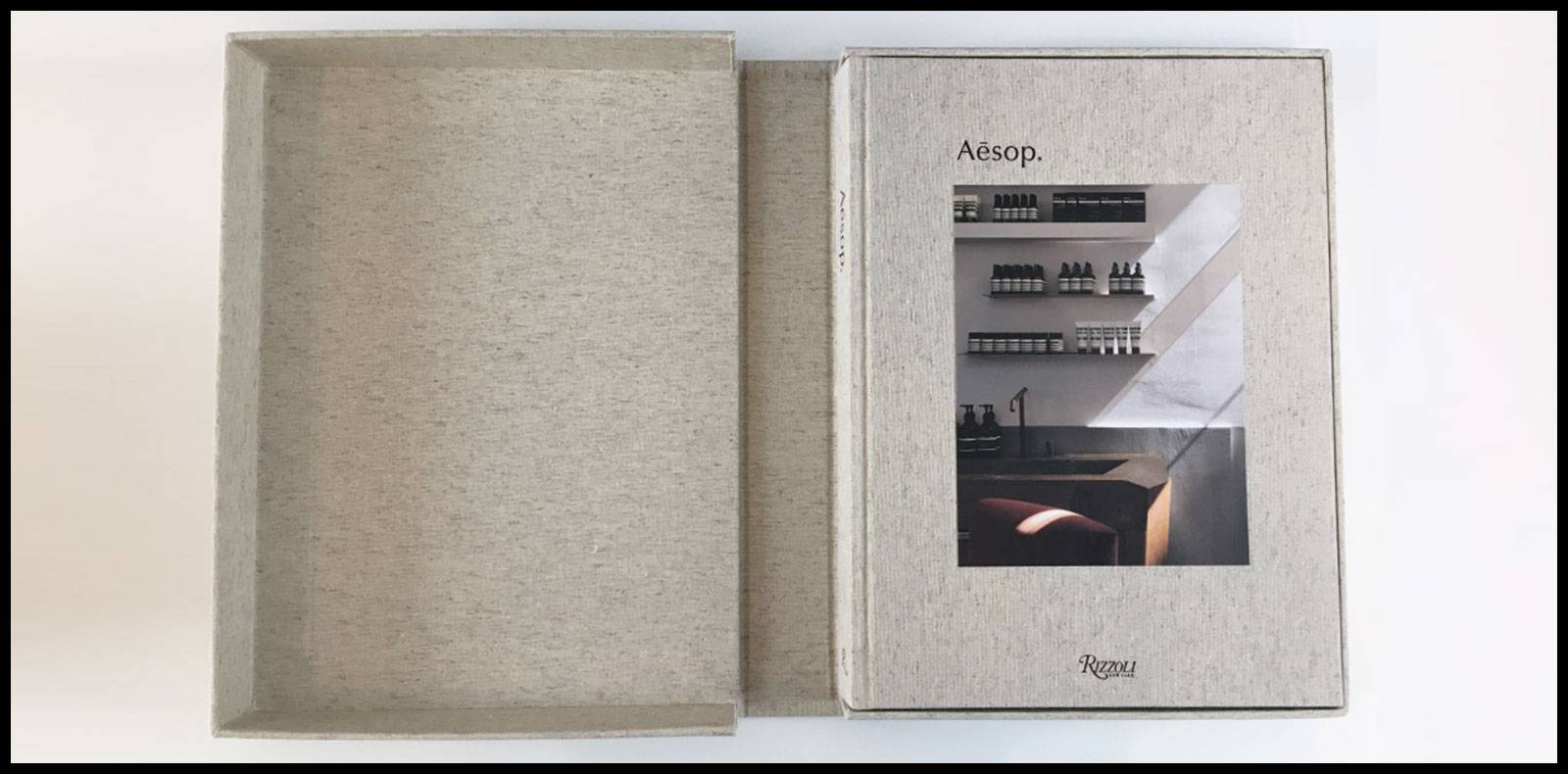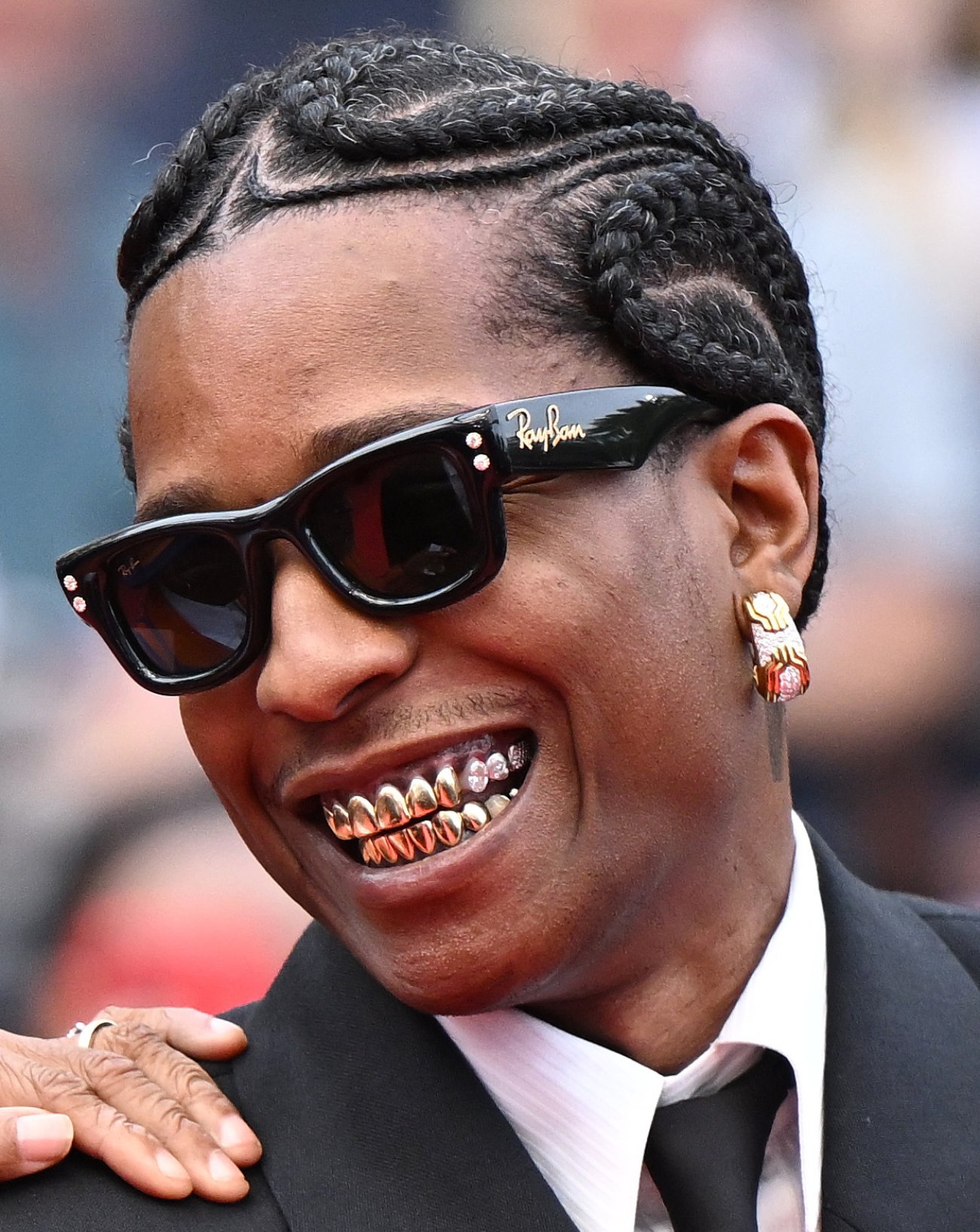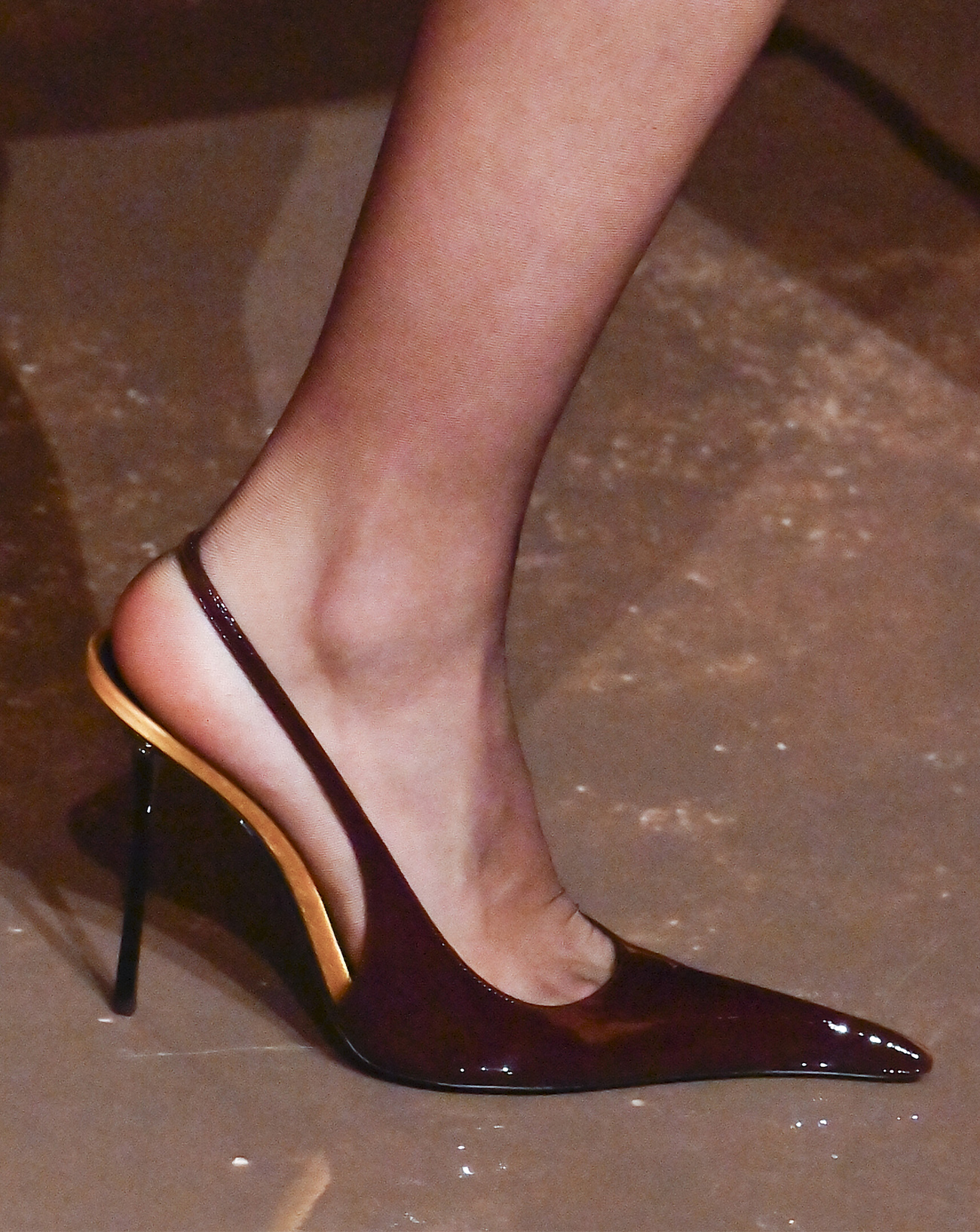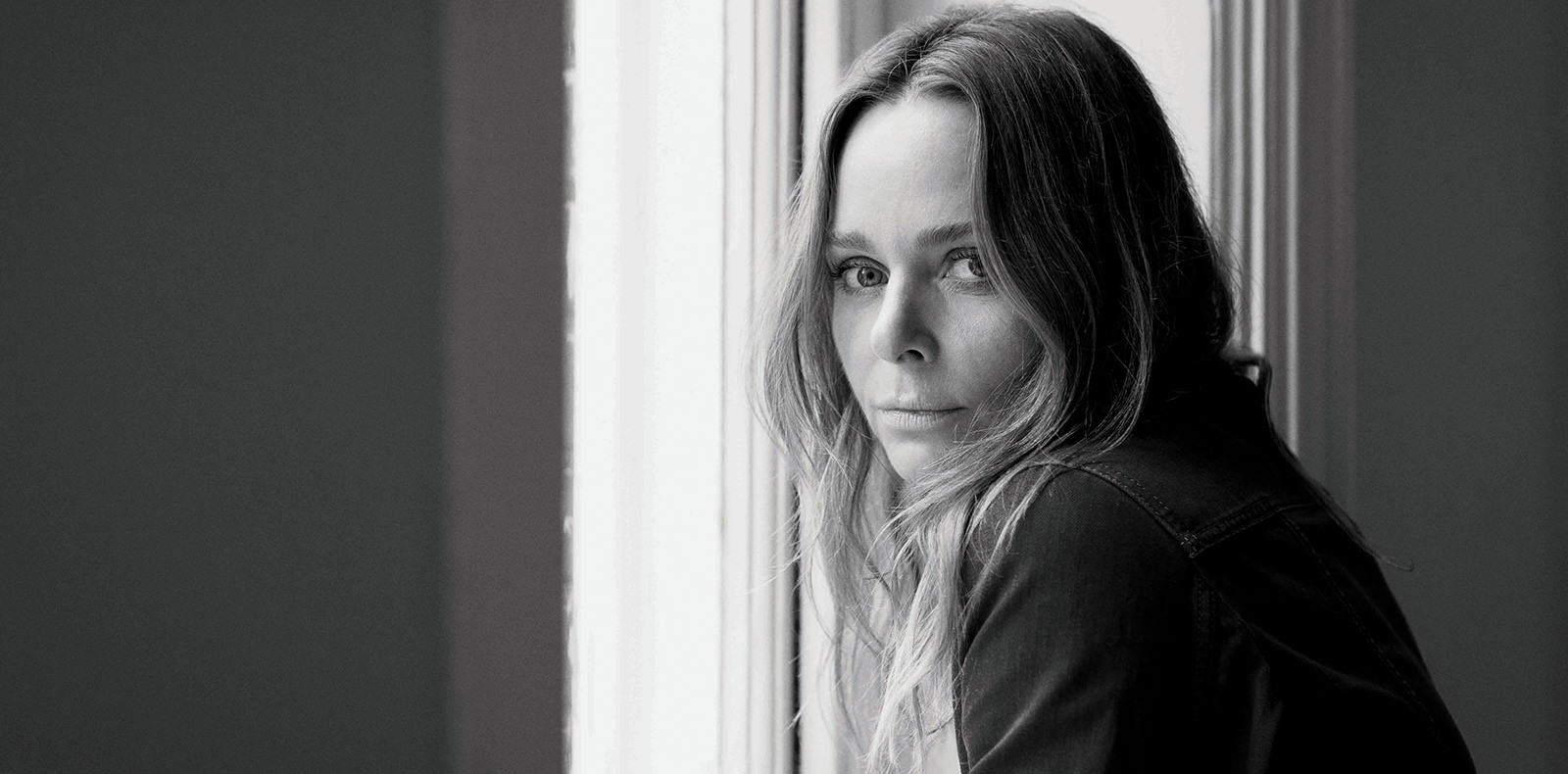
28

28
“Trucider une pauvre bête et la dépecer pour en faire un manteau c’est lui manquer de respect.” Rencontre avec Stella McCartney
Fidèle à ses convictions, Stella McCartney a fait du respect du monde animal, et de la planète, un des principes fondateurs de sa maison de mode. Un engagement de chaque instant que la créatrice britannique évoque ici sans langue de bois et sans concession.
Propos recueillis par Philip Utz,
Interview by Philip Utz.

Stella McCartney: Bonjour Philip!
Numéro: Coucou, ça va?
Stella McCartney: Bien merci…
Numéro: How was the Met Ball last night?
It was the Met! The Met was the Met.
Pardon me? I didn’t quite catch that? The Met was a mess?
Oooh…
Who was the hottest mess of them all?
Do you mean physically, visually or emotionally? What level of mess are we looking for here exactly?
Visually.
Oh goodness, it’s all one big hot mess in that department. I don’t even register the dresses at the Met Gala, because it’s a sea of proper ball gowns. It’s not like anyone ever goes anywhere else in a ball gown. You end up navigating your way through endless trains, it’s crazy. You wind up spending the whole night staring at the ground whilst trying not to step on someone’s bloody ball-gown train.
Surely you trampled Rihanna’s yellow number last year? It was all over the bloody joint!
Argh. The Met is the gift that keeps on giving, as far as trains are concerned.
What did you wear this year?
Well, you’re just going to have to Google it, aren’t you now darling? Just kidding. I wore a Stella McCartney dress, believe it or not, without a train. It was a green… You know what I tend to do? I try to find something I can actually sit down, walk around, breathe, move and lift my arms in. So I usually wind up with my little gang of people, and we gen- erally feel like we’re not compromising who we are too much for the evening.
Does everyone need to have their outfits approved by Anna Wintour prior to the gala, or is that an urban legend?
[Long silence.] I can’t believe you’re asking me these questions. Are you really asking me that question? Is that why I got on the phone with you: so that your readers can find out whether everyone gets their dresses approved by Anna for the Met Gala? I have no idea. I certainly didn’t. Now let’s please move on to something a little more important.
You’ve always been a very vocal animal rights activist. Is that something that you inherited from your late mother?
I definitely inherited a certain mindfulness from my father and my mother, who both taught me to treat my fellow creatures with respect. And by respect, I mean not eating them or wearing their skins.
What’s the difference between veganism and vegetarianism?
[Laughs.] You’re brilliant! What is the difference between vegan and vegetarian?! Being a vegan means that you don’t eat any animal products whatsoever, so you don’t eat cheese, you don’t eat eggs. Being a vegetarian means that you don’t eat dead animals, or dead fish, which are animals, essentially, in my mind.
Which are you?
I’m a vegetarian, but I’m moving more and more towards being a vegan.
I really don’t know anything about veganism or vegetarianism, so you’re going to have to help me out here…
I’m going to. Absolutely.
“I find it fascinating that leather and fur are so often associated with the top luxury level of fashion. And yet leather, in this day and age, is probably cheaper than a piece of cotton.”

What’s the point of vegetarianism?
In this day and age, there’s a variety of reasons for becoming a vegetarian. The reasons have really shifted in recent years. Vegetarianism is much more of a modern diet, really, on every level. It used to be that people went vegetarian for health rea- sons, because there are clear health benefits to not eating meat and ingesting only fresh produce. It was only later that it shifted into awareness, with people feeling that the mass murder of billions of creatures every year was incredibly cruel, barbaric and old-fashioned. It’s one of the worst industries that we’ve created as human beings. It truly is a disgusting industry, all the more so because it’s hidden. Have you ever seen animals being shipped to abattoirs? Do you even know where these abattoirs are? Have you ever seen an animal getting killed for the food you eat? It’s a dark, dark, dark trade that nobody really knows about, and a hugely profitable one at that. Younger generations are becoming vegan and vegetarian because of the environmental connection: every minute, hundreds of acres of the Amazon rainforest are being cut down to make way for grazing cattle, and water and grains are being ineffectively used to feed the cattle, which is very, very environmentally unfriendly. Not to mention all the methane gases that come from the meat industry. I think that side is fascinating to the younger generations above and beyond the other two reasons I gave. They understand that if they want the planet to live on, then this industry has to change, and we have to reduce the amount of meat we eat because it’s more harmful to the environment than driving a car, essentially. For me, in fashion, I thought it would be hypocritical for me to use leather and fur if I don’t eat it. If I don’t believe in killing animals, why on earth would I do it for the sake of fashion, which would only make it even more ridiculous.
Would you say that the production of leather is as cruel as the production of fur?
I don’t think there’s any difference, because at the end of the day you’re killing an animal and stripping its skin off its body. It’s somebody’s baby – or it has a baby – it breathes, it lives, it has emotions, it has feelings… The concept that leather is a by-product of the meat industry is complete bullshit. Not to mention the fact that the meat industry is disgusting in itself, so it doesn’t really make it any better. I find it fascinating that leather and fur are so often associated with the top luxury level of fashion. And yet leather, in this day and age, is probably cheaper than a piece of cotton. So there’s such a tiny price put on an animal’s life. Leather is such a mass-produced product that it always kills me when people try to pass it off as luxurious. Let’s face it, people take my Falabella bag, which isn’t leather, copy it and sell it on the beach in Majorca in real leather at a fraction of the price. I don’t understand what is going on on this planet, it’s all so fucked up. Also, not one fur house or leather house would allow you, as a journalist, to go and see how they’re killing those animals. It’s such a proud industry, and it’s so luxurious and so beautiful and so steeped in history and tradition, and yet I challenge you, now, to get into the door of a leather or fur factory, let alone into one for exotic skins such as python or crocodile. I would love to see a journalist invited in to accompany the animal on the extraordinarily beautiful journey it takes from the fur farm to the abattoir, the path from A to Z of becoming a handbag or a pair of shoes. Believe me, it’s not pretty, it’s not fashionable, it’s not luxurious. It’s murder. I’m an activist, and even I haven’t seen all those things. I have no idea what kind of bloodbath it is, but when I imagine it as I speak, it’s like a horror film in my head.
“The industry hasn’t suddenly woken up to realize that the fur industry is an absolute disgrace, it’s just that they’re surfing on the current trend for sustainability.”
Is it harder to run a fashion house without using leather and fur?
Absolutely. I’m out here on my own, and I’m kind of making it up as I go along. I’ve had to learn, step by step, to find materials that I can use, some that mimic the look of leather, some that don’t… And then you have to consider the environmental issues that might arise from some of the substitute fabrics you’re using. You ask yourself, “What is a sequin made out of?” PVC. “And what does PVC do?” Well, it’s carcinogenic and it’s terrible for the environment. What I’m trying to say is that it takes much more time, more consideration, more resources, more money, more everything if you want to have a mindful, conscious approach to being a business person in the fashion industry. If a lot of people still haven’t adopted this way of working, it’s because it’s harder.

How do people tend to react to what is clearly a very principled stance on your part?
The really fascinating thing is that whenever I grant an interview, the journalists invariably focus on sustainability. It’s a completely different approach, and hopefully it’s the future of fashion. What do journalists talk to normal fashion designers about? What is there to talk about? Shoes and bags? We have to challenge ourselves and start having conversations in the fashion industry that are honest, real and true. The fashion industry is the second most harmful industry to the environment. Every single second a truckload of fast fashion is getting burnt or buried as landfill. Every second. Why aren’t more people talking about this in an authentic way? Designers will occasionally talk about it for one tiny capsule collection, but only to tick a box on a corporate list of things that they need to be seen as doing. But surely this is an interesting conversation to have? Personally I find it really exciting working with new technology. They’re growing leather in laboratories now, for heaven’s sake! Fashion is supposed to be about change, so why are we all using the same seven materials? You’re a fashion journalist, do you even know what clothes are made out of? Take rayon for example: it’s made out of tree pulp, so 150 million trees are cut down a year for viscose, which is one of the most widely used materials in the fashion industry. It took three years – of my life, and of my company’s time and money – to research getting our viscose from a sustainable wood source. As things stand right now, we’re the only people in the industry to have done that…
Do we know for sure that animals have emotions?
Well I do. What, just because you don’t speak their language? I mean, really? What do you think? Animals scream when they’re getting their throats slit. It’s a scientifically proven fact that adrenaline rushes through their veins as they’re being slaughtered, the exact same hormone that helps them to escape their predators when they’re being hunted. That’s an emotional experience, wouldn’t you say? I mean, we have it! People tend to think that unless it’s a pet dog or a cat, animals don’t have feelings. I beg to disagree. And I hate to say it, but I don’t think my perspective is an odd perspective. I find it so old- school that people are even having these conversations anymore.
To what extent are buzz words such as “eco-friendly,” “fur free” or “sustainable” currently being deployed by some houses as a marketing ploy?
I think you know the answer to that question. It’s obvious that fashion houses across the world have invested millions in attacking the young consumer. They’re not stupid: they’ve done their research and they know that young people require a different approach with more transparency, more authenticity, and a better practice in business. The industry hasn’t suddenly woken up to realize that the fur industry is an absolute disgrace, it’s just that they’re surfing on the current trend for sustainability. It’s funny, when I was young and I was a vegetarian, I would be ridiculed, I would be met with quite a lot of defensiveness or aggression at dinner parties, it wasn’t a pleasant conversation to have. You’ve seen my journey in the fashion industry, and you know that I wasn’t exactly embraced for not using leather when I first started out. I was definitely a weird entry into the industry, and I was told left, right and cen- tre that I’d never have a business because of my beliefs.
What exactly is “sustainability” already?
Oh my God, Philip, you’re so crap. I’m speechless. This is really a bummer. Did you just ask me: “What exactly is sustainability already?” Is that even how you phrased it? For real? I love you for that, it’s so British. “What’s all this crap about sustainability? What’s the big bloody deal? What are you all blabbing on about?” [Laughs.] I can’t even begin to answer, I’ve got a bit of a hangover. Do your market research and get back to me.
What do you make of Donald Trump’s assertion that “the concept of global warming was created by and for the Chinese in order to make U.S. manufacturing non-competitive”?
I feel that he could – and I use the word “could”, rather than “should” – have his advisers – of which he has many, coming and going – look a little deeper into that particular issue. It’s disappointing to have a world leader with such an opportunity to do so much good who is trying to dis- miss the whole notion of climate change. He’s a grandfather for god’s sake, so if he doesn’t do it for himself, he should do it for his grandchildren.
Why did you choose to end your 17-year-long collaboration with Kering on your own brand in April this year?
I bought my company back from Kering because I’d had…
Enough. Because you’d had enough!
No, no, no. I really have loved and enjoyed every moment of my partnership with Kering and the Pinault family. Honestly, I don’t have one bad word to say, and I’m not just saying that. I have a deep affection for them, actually, but there was an option that I had that reoccurred at certain points in my contract, and this time I felt it was right for me to call it. It’s really a matter of control, and having control over my name and the legacy of the brand. It’s not an option that many designers get, so therefore I felt that it was an empowering move.

Stella McCartney : [En français] Bonjour Philip !
Numéro : Coucou, ça va ?
Bien, merci !
Numéro : [En anglais] C’était comment le Met Ball, hier soir ?
C’était le Met. Le Met était le Met.
Qui était une vraie poubelle au gala cette année ?
Qu’entendez-vous exactement par “vraie poubelle” ? Faites-vous allusion à l’apparence physique des invités, à leur tenue vestimentaire ou à leur état émotionnel ?
À leur tenue vestimentaire. Qui portait la robe la plus hideuse ?
Mon Dieu ! c’est un vrai foutoir à ce niveau-là. Je ne distingue même plus les tenues les unes des autres tant ça grouille de robes de bal hideuses. C’est toujours assez surprenant parce que je ne vois pas qui porte ce genre de confection aujourd’hui… en dehors des gens qui vont à ces événements où vous passez votre soirée à fixer le sol pour ne pas vous prendre les pieds dans la traîne de quelqu’un.
Qu’avez-vous porté cette année pour l’occasion ?
Vous n’avez qu’à faire un tour sur Google, darling. Je plaisante. Imaginez-vous que j’ai opté pour une robe Stella McCartney – verte, et dépourvue de traîne – à la grande surprise de tout le monde. Pour ce genre de soirée, j’ai tendance à choisir une tenue dans laquelle je vais pouvoir me déplacer, m’asseoir, respirer, voire lever les bras si jamais l’envie m’en prend. Ce qui n’est pas le cas de tout le monde. En général, je m’y retrouve toujours avec le même groupe de copines qui n’ont pas trop envie de compromettre leur propre style pour se plier à un quelconque dress code.
En parlant de dress code, la légende veut que chacun des invités du Met Ball fasse approuver sa tenue au préalable par Anna Wintour, rédactrice en chef du Vogue américain et organisatrice de la soirée. La légende dit-elle vrai ?
[Long silence.] Je n’arrive pas à croire que vous me posiez ce genre de question. Vous êtes sérieux ? C’est pour répondre à des inepties comme celle-là que j’ai accepté de vous parler ? Eh bien, permettez-moi d’y répondre : je n’en ai pas la moindre idée. En tout cas, elle n’a certainement pas validé la mienne. Voilà. Et si on passait à autre chose maintenant, pour parler de sujets un poil plus intéressants ?
Très bien, moving on, vos convictions écologiques vous viennent-elles de votre mère Linda, elle-même très engagée pour la défense des animaux ?
Mes parents m’ont tous deux appris à répondre de mes actes et à traiter tous les êtres de cette planète avec le même respect. Et à mes yeux, trucider une pauvre bête, la dépecer pour en faire un manteau, un sac à main ou un pot-au-feu, c’est lui manquer de respect.
“Ce n’est pas comme si le milieu de la mode s’était rendu compte il y a six mois que l’industrie de la fourrure était exécrable. Les maisons ont juste compris qu’à l’heure actuelle le développement durable est un argument de vente non négligeable.”

Sauf votre respect, je n’ai jamais très bien saisi la nuance entre le végétarisme et le véganisme.
Mais d’où sortez-vous ? Vous êtes grave. Alors, pour la petite leçon : le végétarisme est un régime alimentaire qui exclut tous les animaux morts, à savoir la viande rouge et la viande blanche, les poissons et les fruits de mer. Le véganisme, quant à lui, prohibe tout produit lié de près ou de loin à l’exploitation animale : les œufs ou le fromage, par exemple. Personnellement, je suis végétarienne, même si je me reconnais de plus en plus dans les préceptes du véganisme, vers lequel j’ai commencé à tendre dernièrement.
La production de fourrure est-elle plus cruelle pour les animaux que la production de cuir ?
Je ne fais pas la différence : dans les deux cas, vous assassinez un animal – un être vivant qui bouge, qui respire et qui éprouve des sentiments et des émotions comme vous et moi – pour le saigner, l’écorcher et le dépouiller complètement de sa peau. Et qu’on n’essaye surtout pas de me faire passer la pilule en affirmant que le cuir est un sous-produit de l’industrie de la viande. Cet argument est complètement débile. Cette industrie est révoltante en soi, donc ce n’est pas comme si elle pouvait servir d’excuse à quoi que ce soit. Ce qui me fascine, par ailleurs, c’est la façon dont le cuir et la fourrure sont aujourd’hui perçus comme le summum du luxe. Et pourtant, à métrage égal, le cuir ne coûte guère plus cher que le coton. Ce n’est pas un produit de luxe, mais de masse. Sur les plages de Majorque, je tombe souvent sur des contrefaçons en cuir de mon sac Falabella. Eh bien, figurez-vous qu’elles sont vendues à une fraction du prix de la version que je produis pour ma marque, en cuir synthétique. Je ne vois donc pas ce qu’il y a de luxueux là-dedans. Par ailleurs, aucune maison de mode ne vous laissera, en tant que journaliste, visiter les élevages, abattoirs et autres fermes à fourrure d’où proviennent les cuirs, pelisses et autres peaux exotiques. Je vous mets au défi de tenter le coup, vous verrez que leurs portes resteront verrouillées à triple tour. Et pour cause : les conditions de vie et d’exécution des animaux y sont abjectes, c’est un bain de sang, un film d’horreur, un massacre qui est à mille lieues de l’image luxueuse et léchée que les maisons souhaitent véhiculer.
“J’ai passé une grande partie de mon enfance à me faire ridiculiser et insulter du fait que j’étais végétarienne. Sans parler de la risée générale suscitée par mon refus d’intégrer le cuir dans mes collections.”
Depuis quand les animaux ont-ils des sentiments ?
Comment pouvez-vous en douter ? Ce n’est pas parce que vous ne parlez pas leur langue que vous ne pouvez pas les entendre gémir. Lorsqu’on les écorche, leurs veines se gorgent d’adrénaline, une hormone secrétée en réponse à un état de stress. C’est scientifiquement prouvé. S’il ne s’agit pas là d’une réaction émotionnelle, je ne sais pas ce qu’il vous faut. Les gens ont tendance à croire qu’à part leur animal de compagnie – leur chien, leur chat – les petites bêtes n’ont pas de sentiments. Ce qui est tout bonnement ridicule.
De nombreuses marques mettent aujourd’hui en avant la protection des animaux et de l’environnement, deux engagements auxquels vous vous êtes toujours tenue. Dans quelle mesure ces initiatives récentes vous semblent-elles cyniques, relevant purement d’une stratégie marketing ?
Vous connaissez déjà la réponse à cette question. Les grandes marques de mode du monde entier ont investi des millions et des millions de dollars pour cerner le comportement d’une nouvelle génération de consommateurs et de consommatrices pour mieux les cibler. Elles ne sont pas stupides : elles savent que les millennials sont friands d’une démarche plus responsable, faisant preuve de plus de transparence et d’authenticité. Il ne faut pas se leurrer : ce n’est pas comme si le milieu de la mode s’était rendu compte il y a six mois que l’industrie de la fourrure était exécrable. Les maisons ont juste compris qu’à l’heure actuelle le développement durable est un argument de vente non négligeable. Ce qui n’a pas toujours été le cas, et je suis bien placée pour le savoir. J’ai passé une grande partie de mon enfance à me faire ridiculiser et insulter du fait que j’étais végétarienne. Plus tard, lors des dîners en ville, les gens étaient soit très agressifs, soit sur la défensive vis-à-vis de mes habitudes alimentaires. Bref, cela n’a jamais été une conversation très facile à avoir. Sans parler de la risée générale suscitée par mon refus d’intégrer le cuir dans mes collections. À mes débuts, on a dû me dire mille fois que je ne pourrais jamais construire ma propre marque avec de tels engagements.
“Écoutez, j’ai une légère gueule de bois aujourd’hui, et je vous suggère donc d’aller mener une petite étude de marché avant de revenir vers moi.”

Le “développement durable” ? C’est quoi ça encore ?
Je rêve ou vous êtes complètement demeuré ? Une vraie merde ! Écoutez, j’ai une légère gueule de bois aujourd’hui, et je vous suggère donc d’aller mener une petite étude de marché avant de revenir vers moi.
Qu’avez-vous pensé de la déclaration de Donald Trump affirmant que “le concept de réchauffement climatique” avait été “créé par et pour les Chinois dans le but de rendre l’industrie américaine non compétitive” ?
Oh la la ! Difficile pour moi de répondre à cette question. J’ai le sentiment que M. Trump pourrait – je dis bien “pourrait”, et non “devrait” – demander à sa plaque tournante de conseillers de se pencher un peu plus sérieusement sur la question. Il est toujours décevant de constater qu’un leader mondial ne profite pas de la plateforme globale qui lui est donnée pour créer un monde meilleur. Trump est grand-père si je ne m’abuse, donc s’il ne le fait pas pour lui, il pourrait au moins le faire pour ses petits-enfants.
Pourquoi avez-vous choisi de mettre un terme à votre collaboration de dix-sept ans avec le groupe Kering en avril dernier ?
J’ai racheté les parts de ma société détenues par Kering parce que j’en avais…
… marre ! Vous en aviez marre !
N’essayez pas de me faire dire ce que je n’ai pas dit. Au contraire, j’ai adoré mon partenariat avec le groupe Kering et la famille Pinault. Et je ne dis pas ça pour faire de la langue de bois. Je n’ai pas la moindre critique à faire à leur égard, et au-delà du respect que je leur porte sur le plan professionnel, j’éprouve une réelle tendresse pour eux à titre personnel. J’avais une clause dans mon contrat que je pouvais faire valoir à certains intervalles, et j’ai eu le sentiment que le temps était venu pour moi de l’activer afin de reprendre le contrôle de ma marque. Nombre de créateurs n’ont pas cette chance, et je me sens donc à la fois privilégiée et libre.
